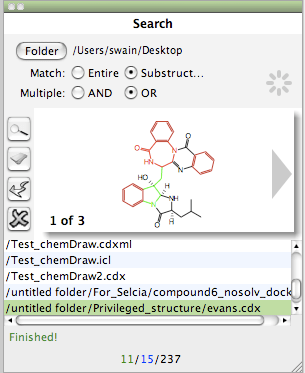

Furthermore, a performance evaluation of the underlying metadata management is performed to investigate its suitability and scalability to the MSML extension. After the investigation presented here, all these details can be integrated to extend the quantum chemical workflows in MoSGrid. In previous work, these details have not been defined and included in the MSML (Molecular Simulation Markup Language) implementation within MoSGrid. In more detail, this is not true and more aspects such as integration grids, convergence criteria and basis set dimensions have to be well defined in order to obtain a trustworthy comparability between quantum chemical codes. At a first glimpse, the definition of functionals and basis sets seems to be sufficient to evoke the same type of calculation in both codes using the quantum chemical workflows in MoSGrid. With regard to the needs of the users, we focus on the interoperability of simulations using two prominent quantum chemical codes, Gaussian09 and NWChem. The science gateway MoSGrid (Molecular Simulation Grid) is a valuable and user-friendly workbench to submit and process molecular simulation studies on a large scale. Science gateways are employed to hide increasingly complex IT infrastructures from users via easy-to-use graphical interfaces while enabling IT-driven research not possible before. This paper introduces MSML, its integration into a science gateway, and its usage for molecular dynamics, quantum chemistry, and protein docking.

Using such application, independent descriptions users can easily switch between different applications or compare them. An application and its results can be described with common semantics. MSML abstracts all chemical as well as computational aspects of simulations. One of its cornerstones is the molecular simulations markup language (MSML), an extension of the chemical markup language. The MoSGrid (molecular simulation grid) infrastructure relieves this burden from scientists by providing a science gateway, which eases access to and usage of computational chemistry applications. Applications providing such methods require a lot of expertise to handle their complexity and the usage of high-performance computing. Journal of Physical Chemistry Letters, 13(25), 5918-5924.State-of-the-art research in a variety of natural sciences depends heavily on methods of computational chemistry, for example, the calculation of the properties of materials, proteins, catalysts, and drugs. Direct Observation of Single-Protein Transition State Passage by Nanopore Ionic Current Jumps. Sonification-Enhanced Lattice Model Animations for Teaching the Protein Folding Reaction. Journal of Physical Chemistry Letters, 13(42), 9809-9814. Impact of the Cellular Environment on Adenosine Triphosphate Conformations. Spliceosomal SL1 RNA binding to U1-70K: The role of the extended RRM.


Protein Stabilization by Alginate Binding and Suppression of Thermal Aggregation.


 0 kommentar(er)
0 kommentar(er)
